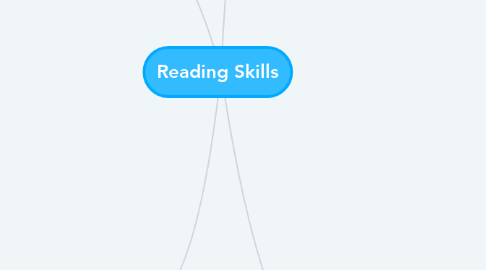
1. Types of Genres
1.1. Academic
1.1.1. Articles
1.1.2. Reports
1.1.3. Reference material
1.1.4. Textbooks
1.1.5. Essays
1.2. Job-related
1.2.1. Messages
1.2.2. Letters / mails
1.2.3. Memos
1.2.4. Reports
1.2.5. Manuals
1.3. Personal
1.3.1. Newspapers and magazines
1.3.2. Letters, emails, greeting cards
1.3.3. Messages. notes
1.3.4. Novels, short stories
1.3.5. Recipes, menus
2. Types of Reading
2.1. Perceptive
2.1.1. Attend to the components of discourse
2.2. Selective
2.2.1. Recognition of lexical, grammatical, or discoure features of language
2.3. Interactive
2.3.1. Reader must "interact" with the text, the reader infer the meaning
2.4. Extensive
2.4.1. Long articles and books, focused on meaning
3. Processes
3.1. Bottom-Up
3.1.1. Process separate letters, words and phrases
3.2. Top-Down
3.2.1. Strategies for comprehension
4. Skills involved
4.1. Micro
4.1.1. Discriminate graphemes and orthographic patterns
4.1.2. Retain chunks in short-term memory
4.1.3. Process writing at an efficient speed
4.1.4. Recognize and interper word order patterns
4.1.5. Recognize grammatical word classes, pattens, rules and elliptical forms
4.1.6. Recognize particular meanings in different grammatical forms
4.1.7. Recognize cohesive devices in written discourse
4.2. Macro
4.2.1. Recognize rethorical forms
4.2.2. Recognize communicative functions
4.2.3. Infer context by using background knowledge
4.2.4. Infer links and connections, main ideas, supporting ideas, new and old information
4.2.5. Distinguish between literal and implied meanings
4.2.6. Detect and interpret references according to the cultural context
4.2.7. Develop and use several reading strategies
4.2.7.1. Scanning
4.2.7.2. Skimming
4.2.7.3. Detect discourse markers
4.2.7.4. Guess meaning from context
4.2.7.5. Activate schemata for interpretation
4.3. Strategies
4.3.1. Identify your porpuse when reading
4.3.2. Apply spelling rules
4.3.3. Use lexical analysis to determine meaning
4.3.4. Guess at meanings when uncertain
4.3.5. Skim for getting main ideas
4.3.6. Scan for specific info
4.3.7. Silent reading for rapid processing
4.3.8. Use marginal notes, outlines, charts, etc for understanding and retaining info
4.3.9. Distinguish between literal and implied meanings
4.3.10. Capitalize on discourse markers to process relationships
